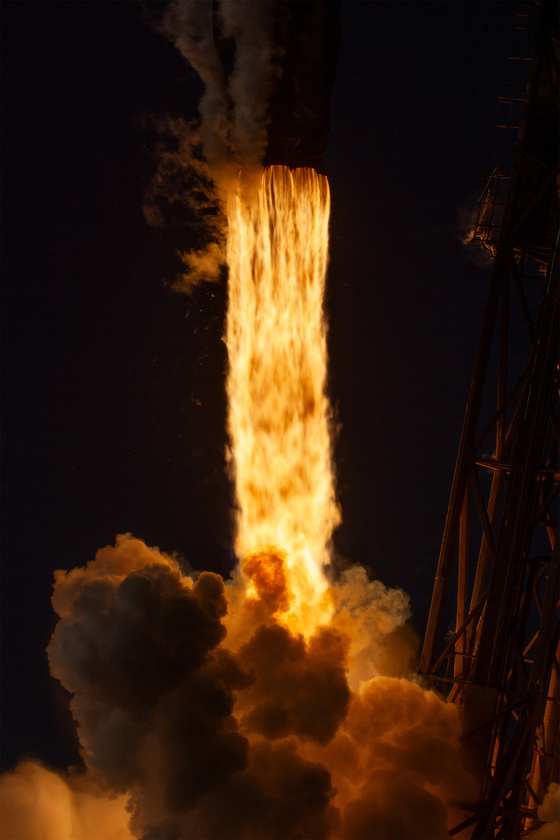Blue Origin's New Shepard launch vehicle, a crew capsule-booster combo, carrying 6 space tourists lifted off at 1439 UTC on June 29, from the the company's Launch Site One in West Texas. The 10-minute NS-33 mission included a about 3 minutes minutes of weightlessness for the passengers aboard the gumdrop-shaped capsule (or RSS Kármán Line), at its apogee (highest point away from Earth.
Following liftoff, the propulsion module(or booster) Tail 5 returned less than 8 minutes later as planned near the launch site. Meanwhile RSS Kármán Line carried the passengers -- Allie and Carl Kuehner, Leland Larson, Freddie Rescigno, Jr., Owolabi Salis, and James Sitkin -- skywards, reaching an altitude of 105.2 kilometers above the ground, surpassing the Kármán Line, which is internationally recognized as the boundary between Earth and space at 100 km high.
For about three minutes as RSS Kármán Line reached its apogee, Kuehners, Larson, Rescigno, Salis and Sitkin experienced weightlessness and saw the curvature of the planet set against the stark blackness of space.
Carl Kuehner became Blue Origin's astronaut number 70, which based on prior precedent, was determined by the seat on board the New Shepard capsule that he assigned for the flight. He also became the 750th person in history to reach space, as recorded by the Association of Space Explorers' Registry of Space Travelers.
The six NS-33 passengers dubbed themselves "The Solstice 33," as they were originally scheduled to launch on the summer solstice (June 21) but were delayed by poor weather conditions.
Flying along with the NS-33 crew were more than 1,000 physical and digital postcards designed by students and the public, as collected by The Museum of Flight in Seattle and Parkcrest Elementary in Burnaby, British Columbia, Canada. The cards are part of an on going project by Blue Origin's non-profit organization Club For the Future.
About 10 minutes 14 seconds after liftoff, RSS Kármán Line returned the six NS-33 passengers to Earth via a parachute-slowed, air thruster-cushioned touchdown near the launch site, demonstrating the reusability of the New Shepard system, which is designed for vertical takeoff and vertical landing (VTVL).
NS-33 crew brought the total number of people who have flown on suborbital flights to 123, according to the Association of Space Explorers. Each NS-33 crew member had a unique background, including environmental advocacy, real estate development, philanthropy, entrepreneurship, and law.
The NS-33 mission patch included symbols representing each crew member’s unique journey. For example, the leaves symbolized Allie and Carl Kuehner’s commitment to environmental stewardship, while the scales of justice represented Jim Sitkin’s work in employment law. Each symbol was connected to the Crew Capsule by a thin green line, symbolizing the interconnectedness of their individual paths.
Sunday's mission marked Blue Origin's 13th human spaceflight and the 33rd flight overall for the New Shepard program.
















